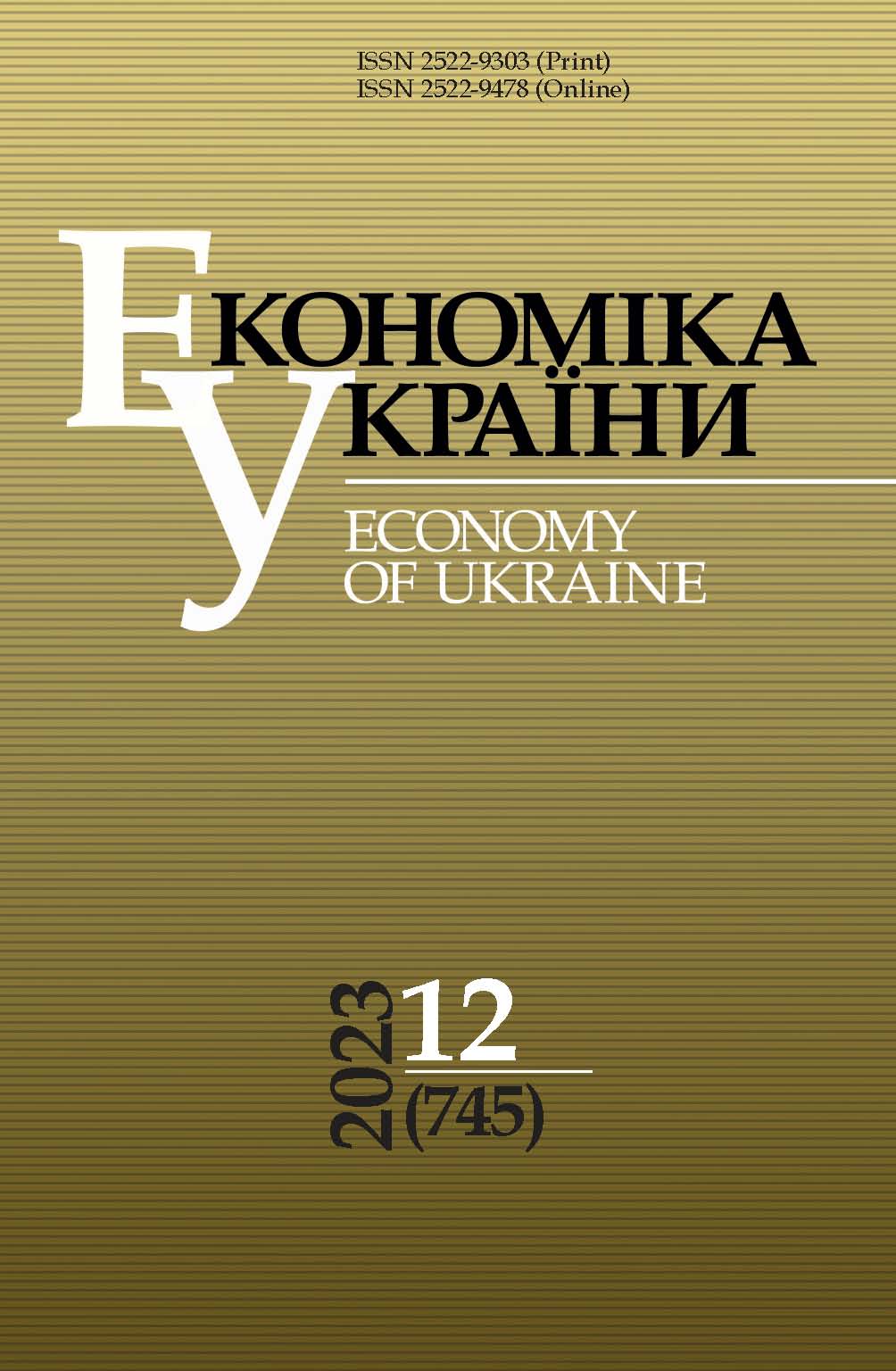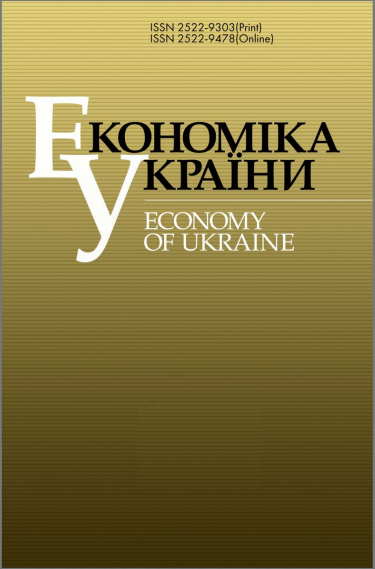GLOBAL MULTIPOLARITY: NEW OPPORTUNITIES AND THREATS FOR THE DEVELOPMENT OF UKRAINIAN EXPORTS
DOI:
https://doi.org/10.15407/economyukr.2023.12.068Keywords:
global multipolarity; global growth pole; exports; imports; unit cost; products of increased technological complexity; competitivenessAbstract
One of the topical areas of modern economics is predicting the implications of global multipolarity. Their analysis in the fields of international politics and international trade law gave grounds for suggesting that global multipolarity creates both new opportunities and additional threats for the development of smaller developing economies. To test the hypothesis on data collected in the field of economy, it is proposed to analyze these opportunities and threats as strong and weak trade incentives formed by countries which are new actual and potential global growth poles when purchasing raw materials and products of increased technological complexity in smaller developing economies. To implement this scientific method, a set of methodological and methodical approaches has been developed to correct the list and rank actual and potential global growth poles, to evaluate their shares in the purchase of products of increased technological complexity.
Approbation of the proposed scientific approaches on the example of Ukraine revealed that on international markets, the additional demand from China and potential global growth poles from among countries with emerging markets creates strong trade incentives for revitalizing economic activity in domestic export industries producing raw materials and products of their shallow processing, and the weak ones – in industries producing products of increased technological complexity. Therefore, further rapid inertial expansion of Ukraine's trade with these countries will certainly increase the risks of slowdown in qualitative (structural) changes in domestic foreign trade in favor of products of increased technological complexity. The obtained empirical data confirm the assumption of Western scientists that global multipolarity creates additional threats to the development of smaller developing economies, as it encourages them to retain the role of raw materials supplier to world markets in the future.
References
Huidrom R., Kose M.A., Ohnsorge F.L. How important are spillovers from major emerging markets? Policy Research Working Paper, 2017, No. 8093. URL: documents1.worldbank.org/curated/en/786391496863791206/pdf/WPS8093.pdf
doi.org/10.1596/1813-9450-8093
Wade R.H. Emerging world order? From multipolarity to multilateralism in the G20, the World Bank, and the IMF. Politics and Society, 2011, No. 39,Iss. 3,pp. 347-378.
doi.org/10.1177/0032329211415503
Hawksworth J., Audino H., Clarry R. The long view: How will the global economic order change by 2050? PricewaterhouseCoopers LLP, February 2017. URL: www.pwc.com/gx/en/world-2050/assets/pwc-the-world-in-2050-full-report-feb-2017.pdf
Vu K. Sources of growth in the world economy: a comparison of G7 and E7 economies. In: Measuring economic growth and productivity: foundations, KLEMS production models, and extensions. B.M. Fraumeni (Ed.). San Diego, Elsevier Science &Technology, 2020, pp. 55-74. URL: www.researchgate.net/publication/338808424_Sources_of_growth_in_the_world_economy_a_comparison_of_G7_and_E7_economies
doi.org/10.1016/B978-0-12-817596-5.00004-4
Pieterse J.N. Multipolar globalization: emerging economies and development. London; New York; Routledge, Taylor & Francis Group, 2018. URL: escholarship.org/uc/item/2dr6q014
Nicolas F. China and the global economic order. China Perspectives, 2016, No. 2, pp. 7-14.
doi.org/10.4000/chinaperspectives.6960
Thomas C. Trade and development in an era of multipolarity and reterritorialization. Yale Journal of International Law Online, 2018, Vol. 44, No. 77, pp. 77-85. URL: scholarship.law.cornell.edu/cgi/viewcontent.cgi?article=2767&context=facpub
Bernal R.L. Small Developing Economies in the World Trade Organization. Washington, DC., 2001, July 23-24. URL: caricom.org/documents/10160-small_developing_economies_in_the_wto.pdf
Pustovoit O.V. Price and value competitiveness of Ukrainian merchandise exports. Economics and Forecasting, 2021, No. 2, pp. 7-31 [in Ukrainian].
doi.org/10.15407/eip2021.02.007
Pustovoit O.V. Ukraine's post-war economy: international aid and growth policy. Economics and Forecasting, 2022, No. 3, pp. 75-98 [in Ukrainian].
doi.org/10.15407/eip2022.03.075
Hoeffler A. Growth, aid and policies in countries recovering from war. OECD Development Co-operation Working Paper, 2012, No. 1. URL: www.oecd.org/dac/conflict-fragility-resilience/docs/WP1%20Growth%20Aid%20and%20Policies.pdf
Downloads
Published
How to Cite
Issue
Section
License
Copyright (c) 2024 Economy of Ukraine

This work is licensed under a Creative Commons Attribution-NonCommercial-NoDerivatives 4.0 International License.



